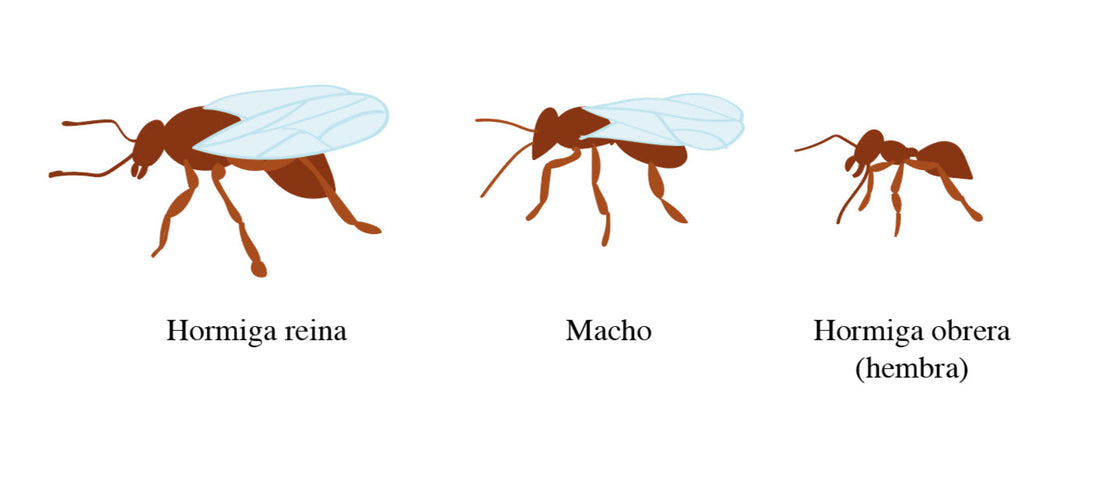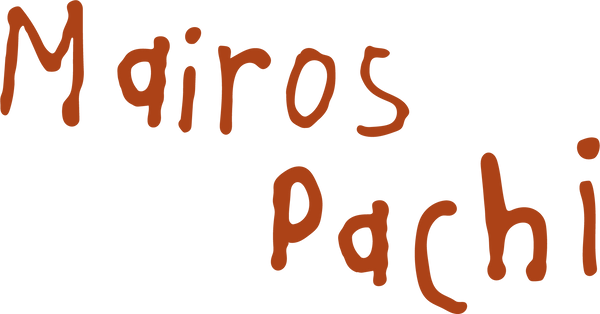
San Juan Ants: Nuptial Flight, Ecosystem, and Conservation
Share
San Juan ants, or chicatana ants, scientifically known as Atta mexicana , are some of the most intriguing creatures in the insect kingdom. Each year, with the first rains, these winged ants emerge for a short period before returning to their burrows. This week, we'll tell you a little more about their life cycle: their nuptial flight, their wings, and their relationship with the fungus Leucoagaricus gongylophorus .
Organization
The life cycle of the chicatanas begins in the subterranean nest. Like all leaf-cutter ants, they have a complex and structured social organization. Inside the nest are: a queen, whose primary function is reproduction; workers who care for the larvae and gather food; and soldiers who protect the colony.
So what makes San Juan ants so different?
Every year, with the arrival of the first rains in June, the winged chicatanas—both males and females—emerge from the nest to participate in their mating flight. This event, also known as the St. John's flight, is crucial for their reproduction.

Nuptial flight. The female ant carries her symbiotic fungus.
One of the most striking peculiarities of the chicatanas is that the females carry a symbiotic fungus in their mouths during flight. This fungus, known as Leucoagaricus gongylophorus , is the ants' main food source and essential for the colony's survival.


St. John's ant with Leucoagaricus gongylophorus
The San Juan ants and their new anthill
Once the nuptial flight is complete, the fertilized females shed their wings. This allows them to use their energy reserves—stored in their wing muscles—to start their new colony.
The chicatana then looks for a suitable location and begins to excavate an underground nest. Here, she will lay a first layer of (unfertilized) eggs and place the fungus on top to feed it. Finally, she will lay the fertilized eggs and care for the first larvae. The first chicatanas will be worker ants and will begin the process of collecting leaves, which will be used to cultivate the fungus. In this way, the nest will be able to survive and expand.

Importance in the ecosystem
San Juan ants are not only an interesting and striking insect; the role they play in their environment is of great importance in maintaining the balance of the ecosystem:
Soil engineers
By excavating their extensive underground nests, they aerate the soil, improving water penetration and nutrient availability.
Nutrient Recyclers
Like leaf-cutter ants, chicatanas collect plant material, which they bring back to their nests to cultivate their symbiotic fungus. This process of decomposition and recycling of organic matter returns nutrients to the soil, promoting efficient and sustainable nutrient cycling in the ecosystem.
Vegetation Control
By cutting leaves and other plant parts to feed their fungus, chicatanas help control vegetation growth. This can prevent overgrowth of certain plant species, maintaining a healthy balance in the ecosystem. Furthermore, they help disperse seeds and contribute to plant diversity in their habitat.
Threats
In a very short period of time, we've observed a significant decrease in the number of San Juan ants. Previously, with the first rains, dozens would emerge, covering an entire yard. Now, the situation is very different: you have to look for them, and with a lot of luck, you might find one. What has affected them to this degree? And what can we do to help them?
Habitat Loss
One of the main threats facing San Juan ants is habitat loss. With urban expansion and deforestation, they have fewer and fewer places to build their nests or find leaves to grow their symbiotic fungus.
Climate Change
Climate change has affected rainfall patterns, crucial for the nuptial flight of the chicatanas. Alterations in the rainy season desynchronize the ants' emergence, thus affecting their mating cycle and reducing the reproductive success of colonies.
Use of Pesticides
The indiscriminate use of pesticides in agriculture is devastating for chicatanas. These chemicals not only kill the ants directly, but can also negatively affect the symbiotic fungus they depend on for food.
Gastronomy
Chicatanas have been a part of Mexican cuisine since pre-Hispanic times. This, coupled with the fact that they are prey for several other animals, has affected their numbers in the colonies. Although predation is a natural part of the ecosystem, the additional pressure from other factors can make chicatana populations more vulnerable.
San Juan ants are a unique insect of great importance to our ecosystems. To protect and preserve them, we can reduce our consumption of chicatanas until populations recover and use organic pesticides that do not harm either the ants or their symbiotic fungus. We can also support and promote the conservation of natural areas.

